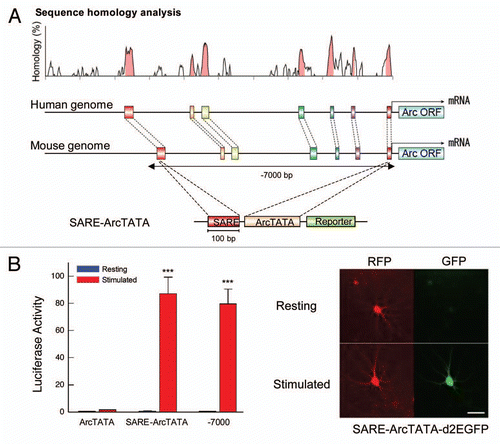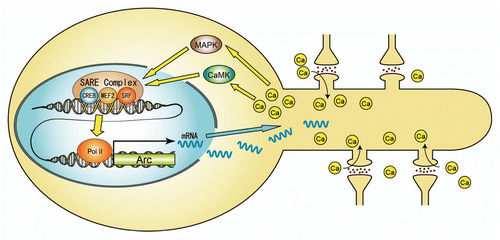Figures & data
Figure 1 Synaptic Activity-Responsive Element (SARE) possesses a strong enhancer activity that is uniquely sensitive in response to synaptic stimulation. (A) SARE locates in an evolutionarily conserved genomic region in the Arc promoter. The SARE transcriptional activity was investigated with a construct in which SARE was fused directly upstream of a short TATA-containing sequences of the Arc promoter (SARE-ArcTATA). (B) SARE replicates the activation ability of the Arc7000 full promoter. Left, Summary of luciferase assays. Cultured cortical neurons electroporated with luciferase reporter constructs were synaptically activated and luciferase induction-folds were measured. Right, GFP reporter assays. GFP reporter expression via SARE activation was detected in individual neurons. RFP served as a transfection marker. Modified from Kawashima et al.Citation30 Scale bar, 50 µm.

Figure 2 A model of activity-dependent regulation of the Arc gene. Ca2+ entry through NMDA-receptors activates CaMK- and MAPK-pathways, which in turn activate 3 major acivitity-responsive transcription factors, CREB, MEF2 and SRF at the SARE site. A putative SARE-protein complex interacts with the transcriptional machinery to promote Arc gene epxression.
